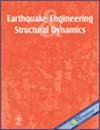Characterization of the Strain Rates in Steel Reinforcement During the Seismic Response of Reinforced Concrete Structures
Abstract
Predicting the seismic performance of reinforced concrete structures responding nonlinearly during strong-intensity earthquakes is one of the most vexing challenges in structural modeling nowadays. Efforts in nonlinear structural modeling have been made since the 1960s, with the latest models having increased complexity. This paper uses data collected from two reinforced concrete specimens built at full scale and tested in the National Science Foundation-funded single-axis Large High-Performance Outdoor Shake Table of the University of California at San Diego. The strain rates derived from strain gauge readings placed in longitudinal bars undergoing plastic deformations in the plastic hinge regions of these two specimens were derived and characterized. To the authors’ knowledge, this is the first paper that reports and characterizes the strain rates recorded on longitudinal bars in plastic hinge regions of full-scale reinforced concrete specimens subjected to strong input ground motions. Test observations indicate strain rates can be high when the Lüders bands nucleate and traverse the strain gauges. The strain rate in one of the specimens reached 44%/s. Once the Lüders bands had fully developed, strain rates reached nearly 20%/s, which was still significant. Most current computational models developed to assess the seismic response of reinforced concrete structures neglect the strain rate dependency of reinforcing steel. If constitutive stress–strain relationships were made strain rate dependent, the fraction of the empirically prescribed damping in the models could be reduced.

 求助内容:
求助内容: 应助结果提醒方式:
应助结果提醒方式:


